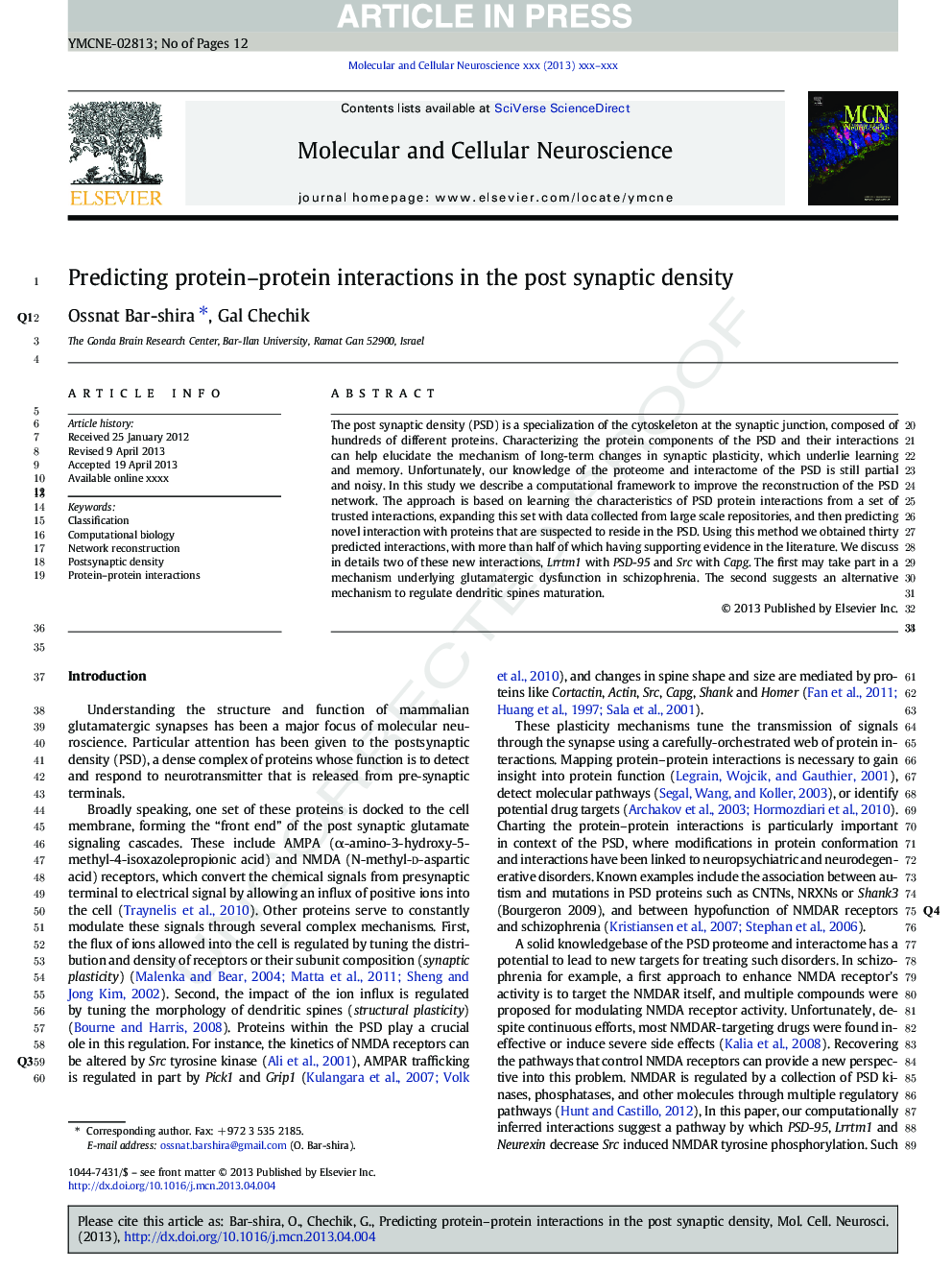| Article ID | Journal | Published Year | Pages | File Type |
|---|---|---|---|---|
| 8478653 | Molecular and Cellular Neuroscience | 2013 | 12 Pages |
Abstract
The post synaptic density (PSD) is a specialization of the cytoskeleton at the synaptic junction, composed of hundreds of different proteins. Characterizing the protein components of the PSD and their interactions can help elucidate the mechanism of long-term changes in synaptic plasticity, which underlie learning and memory. Unfortunately, our knowledge of the proteome and interactome of the PSD is still partial and noisy. In this study we describe a computational framework to improve the reconstruction of the PSD network. The approach is based on learning the characteristics of PSD protein interactions from a set of trusted interactions, expanding this set with data collected from large scale repositories, and then predicting novel interaction with proteins that are suspected to reside in the PSD. Using this method we obtained thirty predicted interactions, with more than half of which having supporting evidence in the literature. We discuss in details two of these new interactions, Lrrtm1 with PSD-95 and Src with Capg. The first may take part in a mechanism underlying glutamatergic dysfunction in schizophrenia. The second suggests an alternative mechanism to regulate dendritic spines maturation.
Keywords
Related Topics
Life Sciences
Biochemistry, Genetics and Molecular Biology
Cell Biology
Authors
Ossnat Bar-shira, Gal Chechik,
